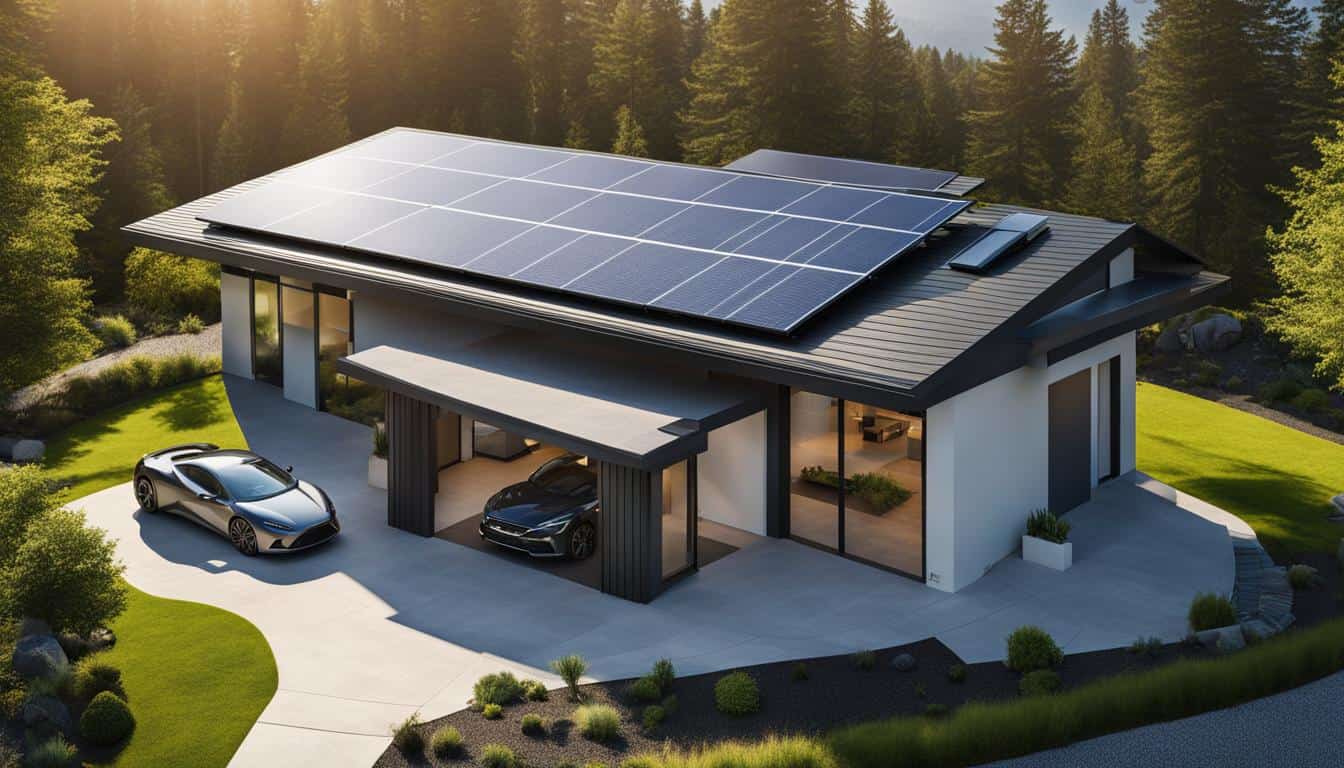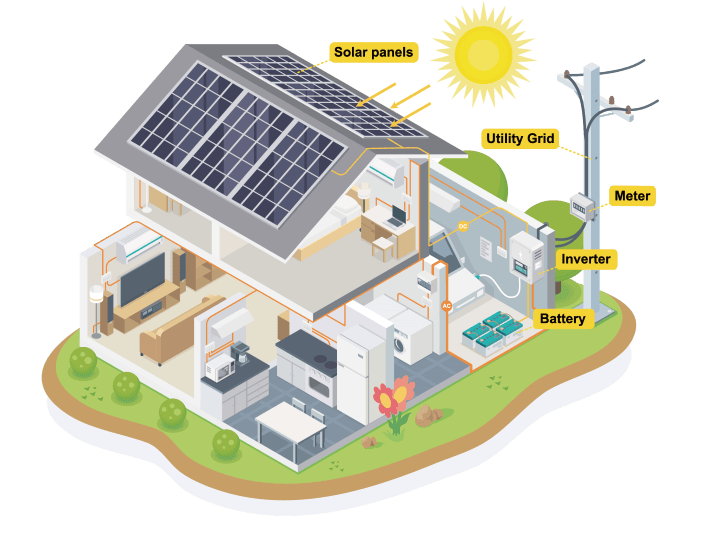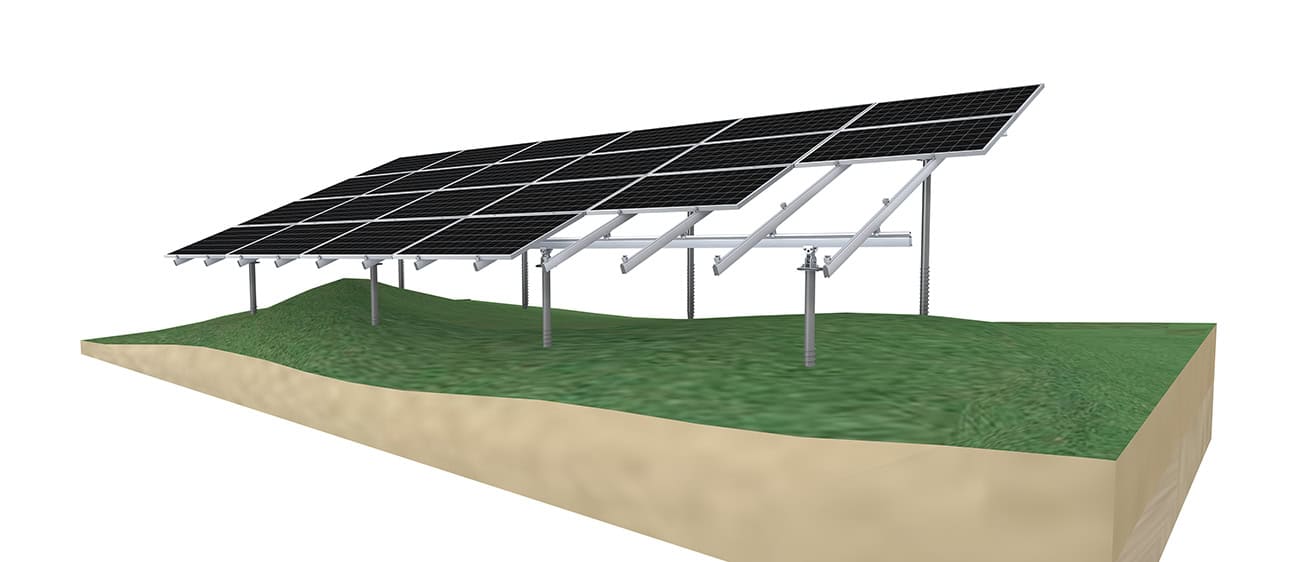Introduction to Hybrid Solar Inverter
Embarking on the world of hybrid solar inverters is entering a realm where technology meets practicality. These devices are pivotal in harnessing solar energy, transforming the sun’s rays into usable electricity to power our daily lives. They also serve as efficient managers, storing excess energy in batteries for times when the sun isn’t shining.
Hybrid inverters are the understated champions in our homes, seamlessly ensuring that the luxuries of modern living remain uninterrupted, regardless of the grid’s reliability. They operate quietly in the background, providing a sustainable energy solution without the noise and pollution associated with traditional generators.
In this introductory section, we’ll delve into the intricacies of hybrid solar inverters, uncovering the innovation that drives them. We’ll explore their role in promoting sustainable living, their financial benefits, and how they contribute to a greener planet. These systems are not only about embracing renewable energy but also about maximizing the efficiency of the energy we capture.
Prepare to dive into the technicalities and uncover the compelling advantages of these modern energy maestros. With every paragraph, you’ll gain a deeper understanding of how solar inverters are shaping a future where every home can be powered by the sun.
Please note that the hybrid inverter featured in this discussion is specifically a grid-tied inverter designed to feed power back into the grid. It’s important to differentiate this from what some may refer to as an “off-grid” inverter that can get power from the grid, which is not the focus of our current topic.
Functions of a Hybrid Solar Inverter
Let’s uncover the inverter’s role in the energy conversion process. Solar panels are the frontline warriors, harnessing the sun’s rays and converting them into direct current (DC). This is where the inverter takes center stage, transforming the power from your solar panels into alternating current (AC), the form of electricity that powers our homes and offices.
The hybrid solar inverter’s capability extends beyond mere conversion. When your solar panels are basking in peak sunlight, producing more energy than your immediate consumption, the inverter smartly reroutes this surplus to charge batteries. This energy storage system is your safeguard in the system, ensuring a continuous power supply even when the sun retreats.
At night or during peak demand when solar production is insufficient, the inverter shifts gears, drawing upon the stored energy from batteries. It’s a seamless transition that maintains a consistent power supply without interruption. Should the battery power deplete, the hybrid inverter isn’t left in the lurch; it can draw from the grid to replenish the shortfall.
Some hybrid solar inverters have a retrofit feature, which refers to their ability to be integrated into an existing solar system without the need for a complete overhaul. This feature is particularly appealing to those who have already invested in solar PV systems and wish to upgrade with solar battery storage or improve efficiency.
Modern solar hybrid inverters are equipped with intelligent solar power monitoring software, offering real-time insights into solar energy production and usage. These systems provide a comprehensive overview of the energy flow, allowing for efficient management and optimization of your power consumption.
This type of inverters is called all-in-one solar inverter because of its dual capability to manage both solar and battery storage, a significant leap from traditional inverters. By ensuring that no excess energy goes to waste and by providing a reliable backup, they represent a smart investment for energy-conscious households and businesses alike.
Advantages of Hybrid Solar Inverters Over Traditional Solar Inverters
Hybrid solar inverters offer a suite of enhancements over traditional models, marking a new era in energy management. One of the most compelling advantages is their ability to store energy to provide backup power. Unlike conventional string inverters, which are limited to converting solar power for immediate use, hybrid models can direct excess power to a solar battery system for later use. This ensures a more efficient use of the energy generated, providing power during outages or peak tariff times, and reducing reliance on the grid.
Another significant benefit is the reduction in energy costs. With the capability to store and use solar energy even after the sun goes down, hybrid inverters help households and businesses maximize their solar investment and minimize their electric bills. This is not only financially savvy but also environmentally sound, as it leads to a lower carbon footprint.
Hybrid grid-tie inverters also exhibit a high degree of flexibility in energy management. They can be programmed to prioritize solar usage, draw from the batteries, or use grid power when it’s most economical. This intelligent energy distribution can significantly enhance the overall efficiency of solar power systems.
In terms of installation, hybrid inverters simplify the solar power system’s architecture by combining the functions of a standard grid-tied inverter and a battery inverter into a single unit. This integration can reduce both the initial investment and the complexity of the system, facilitating easier maintenance and potential future upgrades.
Moreover, solar hybrid grid-tied inverters are designed with future energy trends in mind. As the adoption of renewable energy sources grows, the ability to integrate with other forms of renewable energy, smart home technology, and even electric vehicles becomes increasingly important. Hybrid inverters stand at the forefront of this integration, offering a versatile solution adaptable to emerging technologies and energy needs.
The intelligent monitoring systems that come with hybrid inverters provide users with detailed insights into their energy patterns. This empowers consumers with the knowledge to make informed decisions about their energy use, leading to further optimizations and savings.
Integration with Solar Panel Systems
The versatility of the hybrid solar inverter system is a game-changer for home or business entities going solar. They can easily adapt to the ebb and flow of different energy sources. This multi-faceted approach can significantly bolster energy reliability and independence from the grid.
Moreover, hybrid inverters are designed to be future-ready, catering to the evolving landscape of renewable energy. With the rise of smart homes and the Internet of Things (IoT), these devices are equipped to communicate with various sensors and systems, optimizing energy use and contributing to smarter, more efficient homes and buildings.
The integration of solar power inverter with solar battery storage systems is particularly noteworthy. Solar batteries act as a reservoir of green energy, and hybrid inverters ensure that this stored energy is utilized to its maximum potential. During peak demand or when solar is not producing energy, the inverter draws from this reserve, thus flattening the curve of energy consumption and contributing to a more stable and less strained energy grid.
Furthermore, hybrid solar inverters are stepping stones towards the integration of electric vehicles (EVs) into the home energy system. As EVs become more prevalent, the ability to charge them efficiently with solar will be paramount. Hybrid inverters can manage the energy flow to EV chargers, prioritizing solar usage and enhancing the overall sustainability of transportation.
In the larger grid context, hybrid inverters can contribute to their stability by providing ancillary services such as voltage and frequency regulation. As part of a distributed energy resource system, they can help to balance the grid, especially when renewable energy generation is high, ensuring a reliable power supply and supporting the transition to a more renewable-based power infrastructure.
The integration of hybrid solar inverters into renewable energy systems signifies a forward-thinking approach to energy management, marrying innovation with practicality. They are the conductors orchestrating a harmonious balance between various renewable sources, storage systems, and consumption demands, paving the way for a cleaner, smarter, and more self-sufficient energy future.
Economic Benefits of Adopting Hybrid Inverter Systems

Embracing hybrid solar can be likened to choosing a Swiss Army knife in the world of renewable energy – a multi-functional tool that brings not only versatility but also significant economic benefits. The initial investment in a hybrid system can pay dividends over time, thanks to its ability to reduce electricity bills by maximizing the use of free solar energy.
One of the most immediate financial advantages is the reduction in energy costs. By storing excess energy from your solar panels, households, and businesses can use it during peak tariff periods when energy from the grid is most expensive. This ability to ‘energy shift’ avoids high electricity rates and can lead to substantial savings, particularly for those in regions with high energy costs or volatile pricing.
Moreover, hybrid systems are often eligible for various government incentives and rebates aimed at promoting renewable energy. These financial incentives can significantly offset the upfront costs and accelerate the return on investment. In some cases, the combination of incentives and energy savings can result in a surprisingly short payback period, making the prospect of going green even more attractive from a financial standpoint.
The longevity and durability of hybrid systems also contribute to their economic viability. With fewer moving parts than traditional generators and the ability to manage energy flow efficiently, they often have a longer lifespan and require less maintenance. This reliability translates into fewer replacement costs and less downtime over the years, ensuring a steady and predictable energy supply.
Lastly, the use of hybrid solar systems can enhance property values. A home or commercial building equipped with a modern, efficient renewable energy system is often more attractive to buyers, reflecting a commitment to sustainability and the promise of lower utility costs.
In sum, the economic benefits of hybrid solar extend from the individual to the global scale, aligning financial incentives with environmental responsibility. By considering the long-term savings and the broader economic advantages, it becomes clear that hybrid solar inverters are not just a smart choice for the planet, but for the pocketbook as well.
Technical Specifications and Compatibility
One of the critical factors in choosing the right hybrid inverter is understanding its compatibility with existing or planned solar power setups.
A key specification to consider is the inverter’s power rating, typically measured in kilowatts (kW). This rating should match or exceed the peak power output of the solar array to ensure that no energy is wasted. The inverter’s voltage and current input ranges are also paramount, as they must align with the solar array’s output to ensure efficient energy conversion.
The inverter’s maximum efficiency, which indicates the percentage of solar that is converted into usable electricity, is a benchmark of performance. Higher efficiency means more of the sun’s power is utilized, enhancing the overall productivity of the solar system. Additionally, the inverter’s self-consumption or the energy it uses to operate should be minimal to maximize net energy savings.
Battery compatibility is another critical technical aspect. Solar grid-tie inverters are designed to work with specific types and capacities of batteries. Whether it’s lead-acid, lithium-ion, or any other technology, ensuring that the inverter and battery are a good match is crucial for optimal performance and longevity of the system.
Temperature range is an often-overlooked but vital specification. Hybrid inverters must be able to withstand the temperature extremes of their operating environment without efficiency losses or damage. They often come with thermal management systems to maintain optimal performance even in harsh conditions.
The inverter’s protective features, such as anti-islanding protection, ground fault detection, and overload protection, are safety essentials that ensure the system operates within safe parameters. These features protect not only the inverter but also the connected devices and the grid from potential damage caused by irregularities in power production or consumption.
Lastly, the inverter’s communication capabilities are essential for monitoring and managing energy use. Many modern hybrid inverters for solar are equipped with smart features that allow them to connect to home automation systems and be controlled remotely. This connectivity enables users to optimize their energy consumption based on real-time data and adjust settings to meet changing energy needs.
In sum, the technical specifications of a hybrid inverter determine its compatibility with solar panels, batteries, and the operational environment, playing a pivotal role in the system’s efficiency and safety. It’s a technical dance of numbers and features that, when harmonized, can lead to a symphony of renewable energy efficiency.
The Future
As we look ahead, we see a horizon teeming with advancements that promise to make these systems even more efficient, accessible, and integral to our energy solutions.
Innovations in Inverter Technology
One of the most anticipated advancements is the integration of artificial intelligence (AI) and machine learning. These smart inverters will not only manage power distribution but also predict energy consumption patterns and optimize battery charging and discharging accordingly. This means even more efficient use of solar energy and less waste.
Furthermore, we’re seeing a trend towards the miniaturization of components, which will make inverters more compact and easier to install. This will open up the market to more residential customers, as the ease of installation becomes a less daunting prospect for homeowners.
Battery technology is also advancing rapidly, with the development of solid-state batteries that are more efficient, longer-lasting, and safer. This will bolster the storage capabilities of hybrid solar energy systems, ensuring that solar power is available on demand, regardless of weather conditions.
Predictions for Solar Energy Trends
As green energy takes center stage globally, hybrid solar inverters are expected to play a pivotal role. The increasing demand for sustainable living will likely drive down costs, making solar systems more affordable for the average consumer. This cost reduction could lead to a solar boom, with hybrid inverters at its core.
There’s also the potential for new business models, such as solar-as-a-service, which could remove the barrier of upfront costs and maintenance concerns. Customers would simply pay for the energy they use, much like a traditional utility, but with the knowledge that it’s being sourced from clean, renewable energy.
The proliferation of electric vehicles (EVs) will also impact the market for hybrid solar inverters. With EVs becoming more common, the demand for at-home charging stations will rise, and hybrid inverters will be integral to managing the additional energy load. This could lead to the development of inverters specifically designed to handle both home energy management and EV charging efficiently.
Conclusion
As we wrap up our explorative journey into the world of solar, we can’t help but be impressed by the strides made in this field. These devices are more than just a link between solar panels and our homes; they are the heart of a system that champions sustainability and innovation.
Summarizing the Benefits of Hybrid Solar Inverters
Hybrid solar inverters stand out as a testament to human ingenuity in the face of global energy challenges. They encapsulate the essence of versatility, combining the functions of traditional and off-grid inverters, offering energy independence, and enhancing the reliability of solar power systems. Their ability to store excess energy for later use translates into maximized solar utilization and significant cost savings over time.
The adaptability of hybrid inverters makes them suitable for a wide range of applications, from residential to commercial, ensuring that anyone can contribute to and benefit from renewable energy. The growing trend of these inverters signifies a shift towards a more proactive approach to energy consumption, where every individual has the power to influence their energy footprint.
Final Thoughts on Making the Switch to Hybrid
The shift to hybrid is more than a practical choice; it’s a statement of commitment to a cleaner, more sustainable future. It’s about being part of a community that values resilience, efficiency, and forward-thinking. As solar technology continues to evolve, the role of hybrid inverters will only become more central to our energy solutions.
For those considering the switch, the message is clear: hybrid solar inverters offer not just immediate benefits in terms of energy savings and independence, but they also position users at the forefront of an energy revolution. They are a smart investment in both the financial and ecological sense, paving the way towards a greener, more sustainable world.





